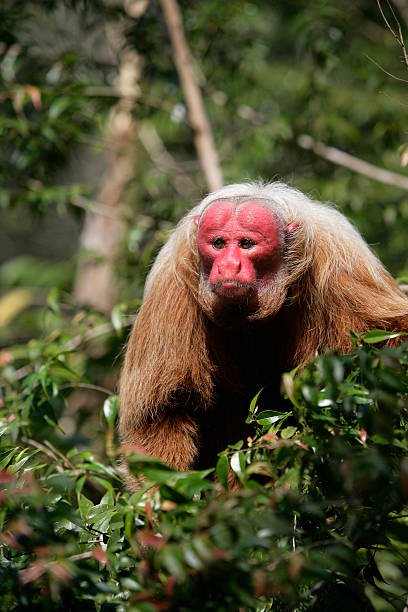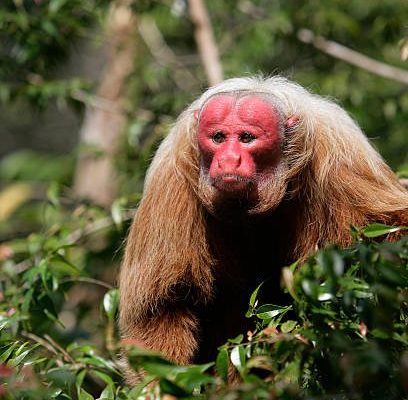
But what happens if you’re lucky enough—or unlucky, depending on your perspective—to spot a uakari in the wild? Imagine it like stumbling upon a celebrity in a coffee shop. You’re excited, maybe a little nervous, and you want to make the most of the moment while respecting the star’s space. Here’s a guide that’ll help you understand what a uakari is, why it matters, and what to do if you cross paths with this unique primate in its natural habitat.
Understanding the Uakari
Before diving into how to handle a uakari encounter, let’s talk about what makes this animal so special. Uakaris are monotypic in the genus Cacajao, meaning they come from a specific branch on the evolutionary tree. Their striking red faces are due to low melanin levels, which gives them that bright appearance, especially when they’re feeling particularly social or excited.
Another interesting fact about these creatures is their habitat. Uakaris are primarily found in the flooded forests of the Amazon Basin. Their environments are rich in biodiversity, which is essential for their diet and health. They mainly eat fruits and seeds, making them highly dependent on the ecosystem around them. So when you see a uakari, you’re not just witnessing a cute animal; you’re looking at a piece of a delicate ecosystem.
You might be wondering why their conservation is vital. Well, the uakari is a good indicator of environmental health. Since they require specific conditions for survival, their presence—or absence—can tell us a lot about the overall state of the forest. If the uakari population declines, it often signals larger problems within the ecosystem.
Staying Calm: What to Do when You First Spot a Uakari
Seeing a uakari in the wild can be an exhilarating experience, but the first thing you should do is stay calm. It’s easy to get caught up in the excitement—trust me, I’ve been there! But remember, sudden movements or loud noises can scare these animals away. They are generally curious but can be cautious around unfamiliar beings.
Here’s what you should do:
- Pause and observe. Stay still for a moment to take in the sight.
- Breathe deeply. This helps both you and the uakari to relax.
- Take note of your surroundings. Is the uakari alone, or is it with a group? Knowing their behavior can help you gauge how to proceed.
Think of it like watching a live theater performance. You wouldn’t jump on stage, right? Enjoy the moment and let the uakari be the star of the show.
Respecting Their Space
When you encounter a uakari, it’s essential to respect their space. Just like us, these animals have personal boundaries. If a uakari feels threatened, it might react in defense, which could lead to a dangerous situation—for both of you.
Here’s how to ensure you’re being respectful:
- Keep your distance. Ideally, you should be at least 20-30 feet away. This distance allows you to observe without intruding on their behavior or habitat.
- Don’t make sudden movements or loud noises. This can startle them, making them flee or react defensively.
- Never try to feed them. Wild animals have their diets, and introducing foreign foods can harm their health.
It’s really about practicing good wildlife etiquette. Think of it as visiting a delicate art exhibit: you admire the pieces, but you don’t touch or disturb anything.
Documenting the Moment
If you’re lucky enough to find yourself observing a uakari, you might want to document the experience. It’s a rare encounter, and taking pictures can help you capture those memories. However, be mindful of how you document:
- Use zoom lenses when possible. This allows you to snap photos without getting too close.
- Be patient. Sometimes, waiting for the right moment is all it takes to get that stunning shot.
- Avoid using flash photography. The sudden light can be disorienting and stressful for the animal.
Think of your camera like a sketchbook—it’s there to help you capture the beauty around you without intruding on it.
Identifying Behavior Patterns
Uakaris have distinct behavior patterns that can give you hints about their mood and intentions. For example, when they are relaxed, you might see them grooming or playing with each other. If they seem agitated or start moving quickly, it might be time to back off.
Here are some behaviors to watch for:
- Grooming: This is often a sign of bonding and relaxation among uakaris.
- Vocalizations: They communicate with various sounds. If they start making loud noises, they might be feeling threatened.
- Movement: Quick or erratic movements can indicate danger, both for them and you.
Being aware of these behaviors helps you respond appropriately, ensuring both your safety and the well-being of the uakari.
Educating Others about Uakaris
Once you’ve had your encounter, consider using your experience to educate others. Share what you learned about these fascinating creatures, why they matter, and how to respect their habitats.
Here are some ways to spread the word:
- Social Media: Post photos and share your experiences. Tag conservation organizations that focus on the Amazon.
- Community Events: Join or host events that promote wildlife conservation. It can be as simple as a local talk or an online webinar.
- Print Materials: Create pamphlets or articles that inform people about uakaris and their ecosystems.
Think of it as planting seeds of awareness. The more people understand and appreciate these animals, the more likely they are to protect their habitats.
Encountering a uakari in the wild is a unique experience—one that can leave you in awe of nature’s wonders. By staying calm, respecting their space, and educating others, you not only enrich your own experience but also help protect these remarkable creatures for generations to come.
So, if you ever find yourself in the Amazon and spot a uakari, remember that you’re not just witnessing a moment but also participating in a much larger story—one that connects all of us to the incredible beauty of our planet.

